Bread Machine Brioche Recipe
4.4
(21)
Your folders
Your folders
Prep Time: 2 hours
Cook Time: 15 minutes
Total: 10 hours, 15 minutes
Servings: 12
Author : Paula of saladinajar.com
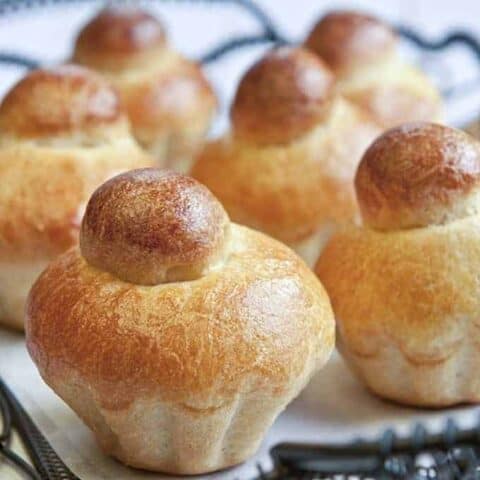
Ingredients
Export 7 ingredients for grocery delivery
Instructions
Step 1
BEFORE YOU START: Set out the butter to soften until it is pliable. See the post for a good description of "pliable." The temperature of the butter is crucial. Chopping the butter into smaller pieces will help it warm up quickly.
Step 2
Combine 1/3 cup of milk and 1 tablespoon of flour in a microwave-safe container. Whisk until smooth. Microwave this liquid paste mixture for 20 seconds on High.
Step 3
Remove and stir. Place back into the microwave for 10-20 seconds or however long it takes to turn the mixture into a thick "gravy" consistency. Let this mixture cool to room temperature. Pour into the bread machine pan.
Step 4
Add eggs, sugar, salt, 2-3/4 cups of bread flour, and yeast.
Step 5
Select the DOUGH cycle and push start. After 8 minutes, open the lid of your bread machine and observe the kneading action. If the dough is too slack, add additional flour one tablespoon at a time, letting the dough absorb the flour before adding more.
Step 6
You want the dough to be thick enough to hold its shape, stick to the sides, then pull away, but not "cleanly." This dough should be stickier than the average bread dough. But it must be firm enough for the bread machine blades to get traction as they knead the dough.
Step 7
About 10 minutes into the DOUGH cycle, open the lid again. Begin to add the butter to the dough, one tablespoon at a time. Use your fingers to squish it as you drop the small chunks over the dough. (If the butter is not squishable, the butter will not absorb into the dough correctly.) Let the dough absorb each piece of butter before adding more. The dough should be smooth, shiny, and pulling away from the sides.
Step 8
Allow the DOUGH cycle to complete. The dough should be doubled in size. If the ambient temperature is chilly in your kitchen, you may need to allow the dough to rise longer until doubled.
Step 9
Gently release the dough from the sides to remove some of the air.
Step 10
Cover the bread machine bowl and place it into your refrigerator for 6-24 hours. (You can also transfer the dough to another bowl before placing it into the fridge.) Do not skip this part. If you don't have time for the chill, you might want to make another kind of bread.
Step 11
Form dough into 2 logs.
Step 12
Cut each log into 5 equally-sized pieces. If you want sliders, cut more pieces. You get to decide. Make more than one size if you want to please everybody.
Step 13
Form each portion into a ball and flatten it somewhat with your fingers on the Silpat or parchment-paper-lined baking tray.
Step 14
Cover each bun with plastic wrap and smash it. I like to use a transparent glass pie plate so I can see how evenly I’m smashing the bun. Cover with a tea towel and allow to proof.
Step 15
Preheat oven to 425 degrees F.
Step 16
After rising to almost double their original size, press each bun gently and evenly with your fingers. Don’t worry. They pop right up once you put them in the oven.
Step 17
Paint with the glaze. Turn oven temperature back to 350 degrees F and bake for 15 minutes.
Step 18
Remove buns onto a cooling rack. Slice horizontally with a serrated knife to use as buns.
Step 19
Place dough on a lightly floured board. Lightly knead and mold into a ball. Divide in half. Cut each half into 6 pieces.
Step 20
Pull a small amount off each of the 12 balls to make hats. Roll all portions into little balls. The smoother the better and practice helps. Place one large ball in each mold or fill a muffin tin. Place all small balls (future hats) on wax paper, parchment, or a silicone mat on a cookie sheet.
Step 21
Cover rolls with a tea towel and allow them to rise in a warm place until almost doubled. This may take 1-2 hours.
Step 22
When rolls have almost doubled in size, use a greased thumb or the handle end of a wooden spoon to carefully depress dough in the center (all the way to the bottom.) Don't worry, it will spring back once it hits the oven. Brush with glaze.
Step 23
Place a small ball in the center of the roll and again brush the entire roll with glaze, taking care not to let the glaze pool at the edges between the dough and the mold.
Step 24
Place individual molds or muffins pans onto a cookie sheet to keep the bottoms from over-browning.
Step 25
Preheat oven to 425 degrees. Then reduce temperature to 375 degrees and bake rolls for about 15 minutes. Loosely cover rolls with foil if tops are getting too dark. Internal temperature should reach 185-190 degrees.
Step 26
Allow the rolls to cool for a couple of minutes. Turn out onto a cooling rack.
Step 27
Best eaten the same day but also good toasted the next day.
Step 28
Roll out dough into an 11 x 15-inch rectangle with the short side towards you.
Step 29
Roll up dough, starting with the short side. Divide into four equal parts.
Step 30
Place each roll perpendicular to the long side of a greased 9 x 5 loaf pan. (I use Baker's Joy.)
Step 31
Cover with a tea towel or shower cap. Allow dough to rise until it reaches the top of the pan.
Step 32
Preheat oven to 425 degrees F.
Step 33
Brush loaf with glaze.
Step 34
Set oven temperature back to 350 degrees F. Bake for 30-35 minutes or until internal temperature reaches 190 degrees F. Cover loosely with a piece of aluminum foil if the top starts to get too brown.
Step 35
Let the bread cool for about 10 minutes before removing it from the pan to a cooling rack.
Top similar recipes
Curated for youYour folders
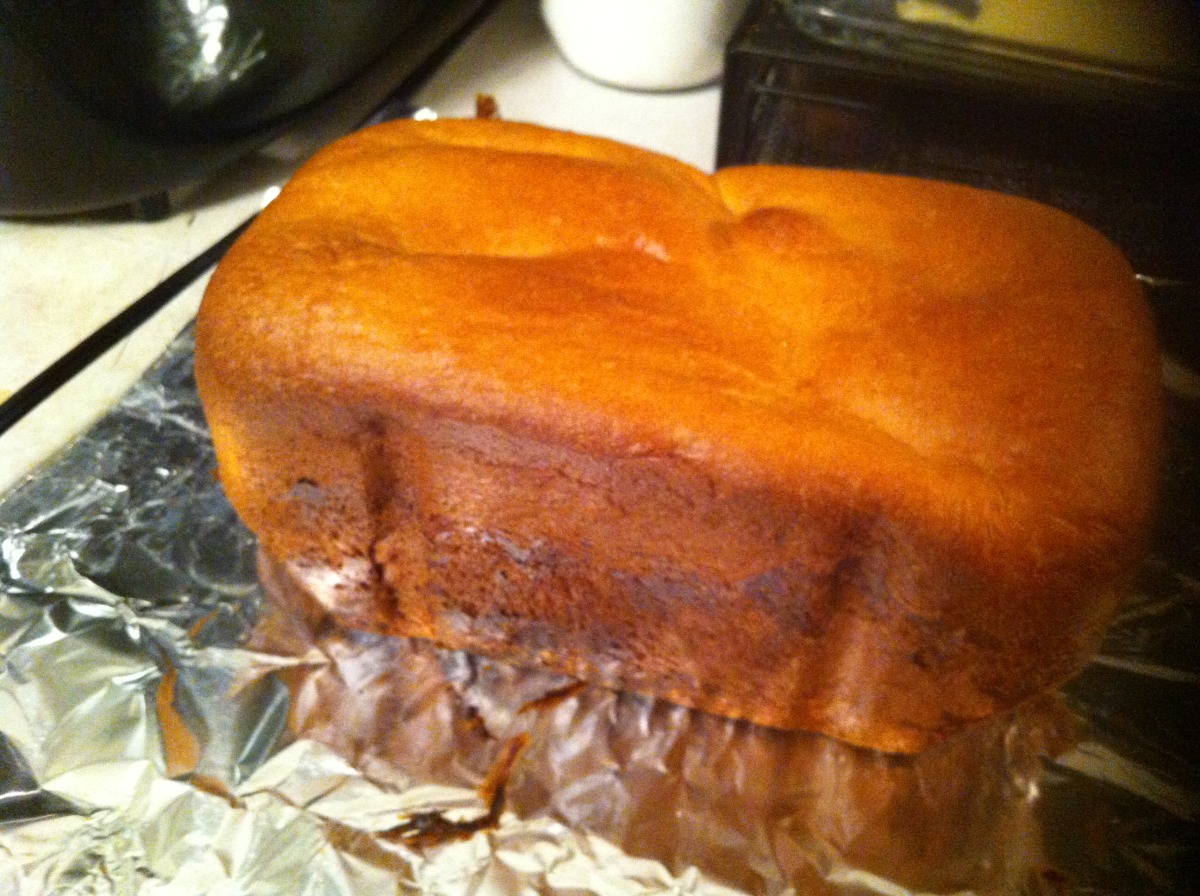
 332 views
332 viewsBread Machine Brioche
food.com
4.5
(45)
Your folders
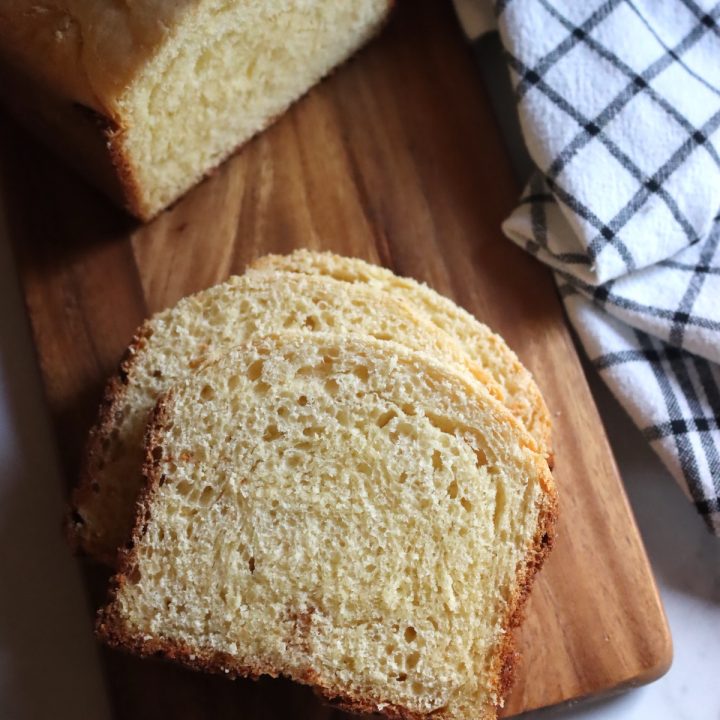
 264 views
264 viewsBread Machine Brioche Bread
adamantkitchen.com
4.5
(4)
Your folders
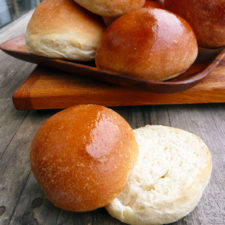
 288 views
288 viewsBread Machine Brioche Buns
sumptuousspoonfuls.com
4.9
(7)
2 hours
Your folders
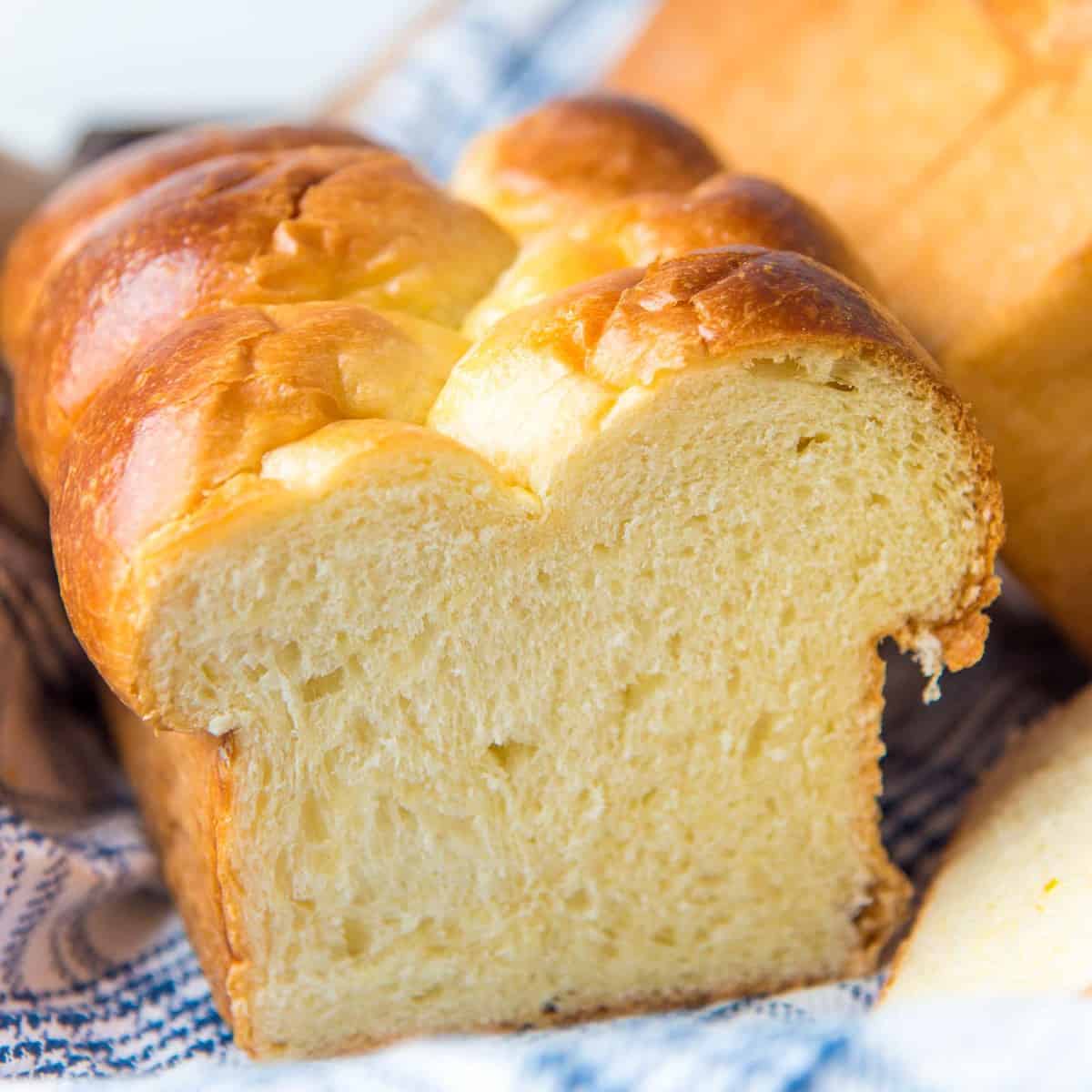
 1382 views
1382 viewsBrioche Bread Recipe
theflavorbender.com
5.0
(70)
45 minutes
Your folders
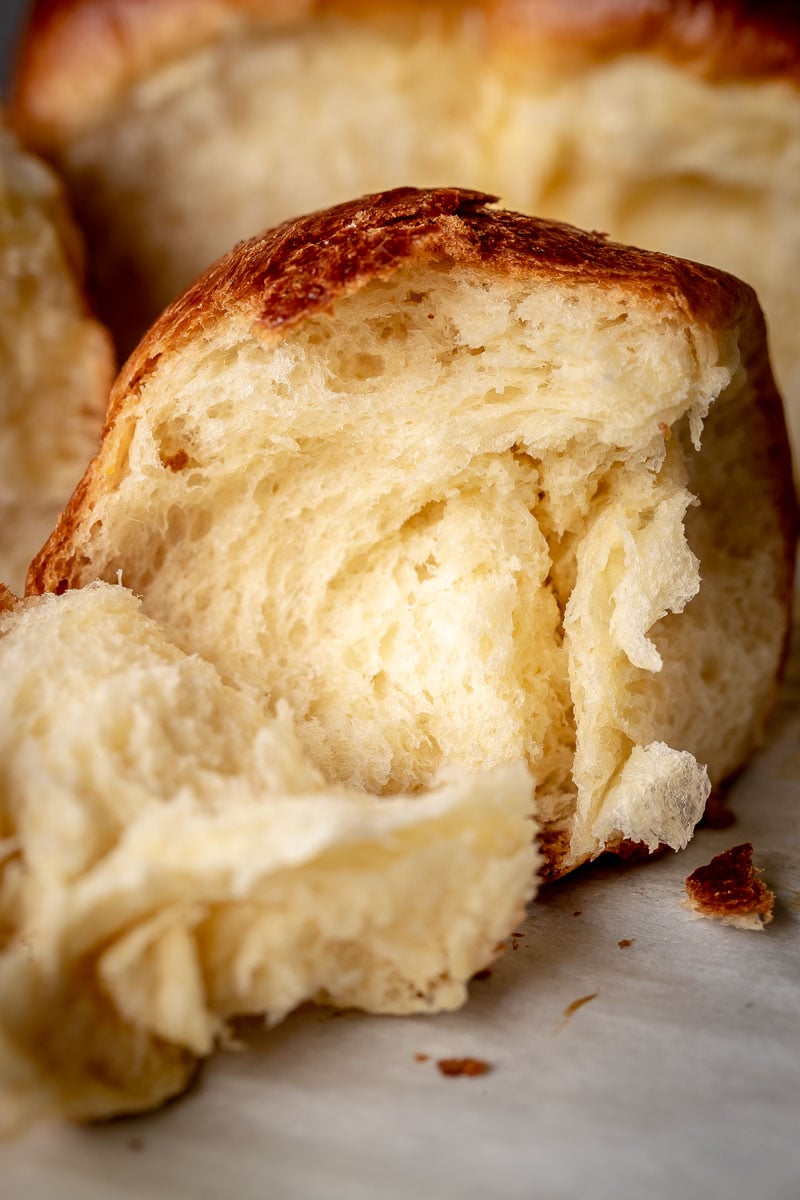
 812 views
812 viewsBrioche Bread Recipe
letthebakingbegin.com
4.8
(16)
20 minutes
Your folders
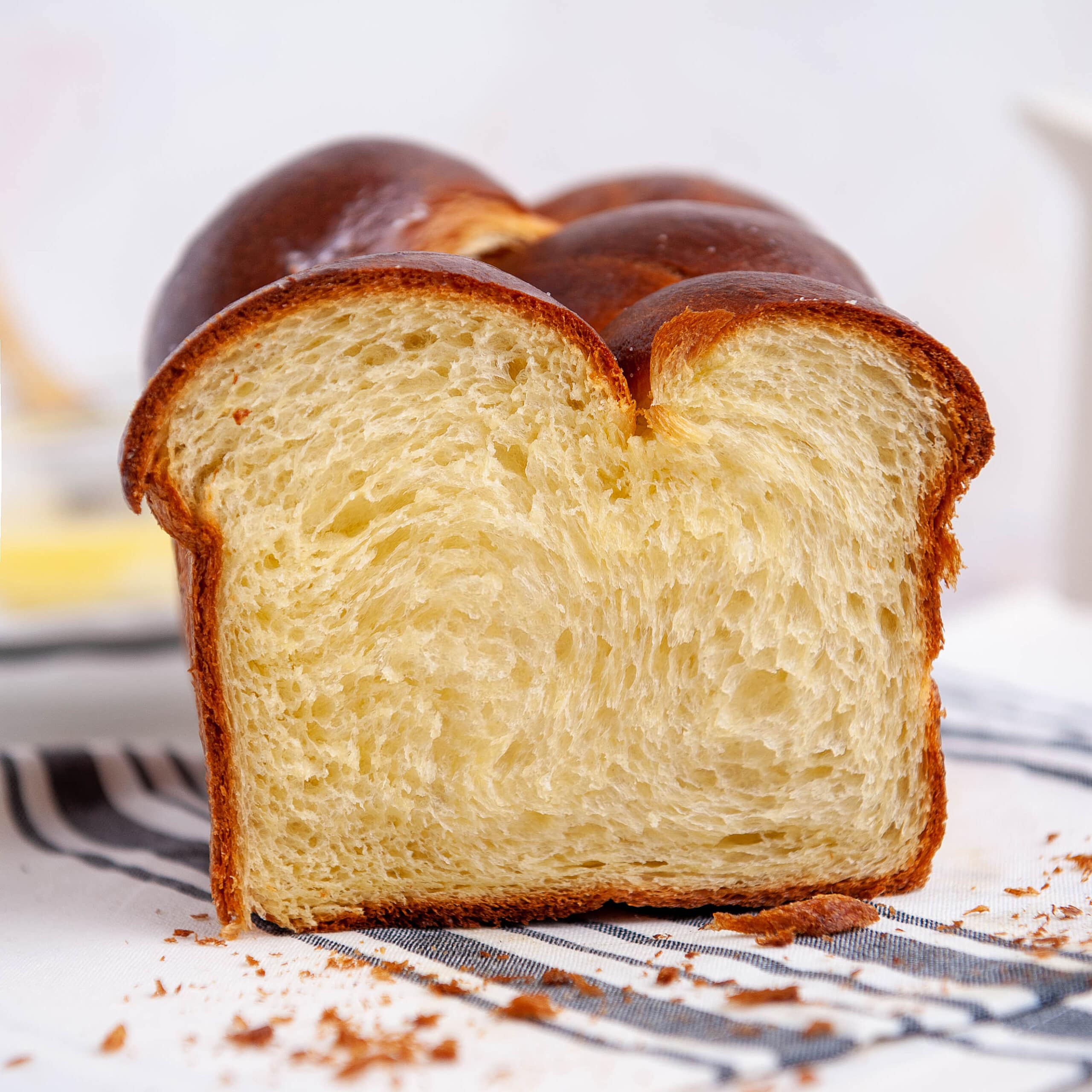
 2056 views
2056 viewsBrioche Bread Recipe
sugargeekshow.com
5.0
(8)
30 minutes
Your folders

 1258 views
1258 viewsBrioche Bread
delish.com
4.7
(153)
Your folders

 370 views
370 viewsBrioche bread
foodcrumbles.com
5.0
(3)
55 minutes
Your folders
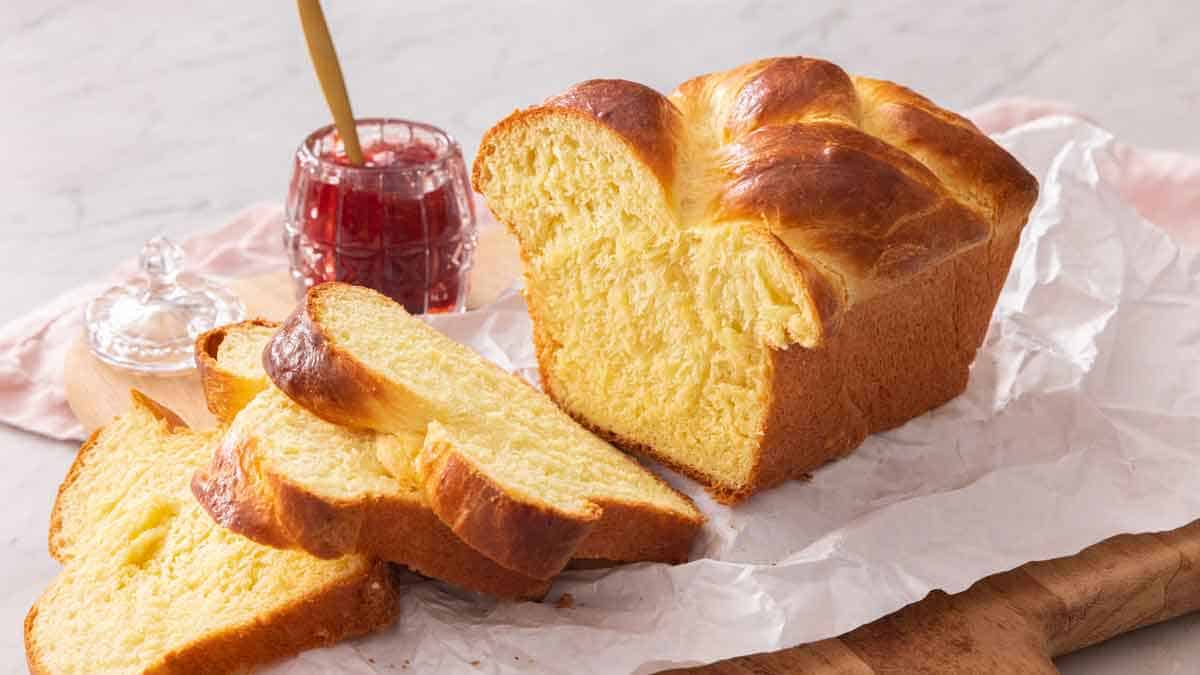
 199 views
199 viewsBrioche Bread
preppykitchen.com
5.0
(35)
35 minutes
Your folders
 400 views
400 viewsHow To Make Brioche in a Bread Mach...
saladinajar.com
Your folders

 417 views
417 viewsSaffron Bread Recipe - Bread Machin...
cajuncookingrecipes.com
Your folders

 379 views
379 viewsBest Bread Machine Bread Recipe
foodlifeandmoney.com
Your folders

 725 views
725 viewsBest Bread Machine Bread Recipe
valentinascorner.com
4.8
(47)
180 minutes
Your folders

 351 views
351 viewsBread Machine - Onion Bread Recipe
breaddad.com
5.0
(27)
180 minutes
Your folders

 323 views
323 viewsBread Machine White Bread Recipe
tastyoven.com
4.7
(217)
205 minutes
Your folders

 391 views
391 viewsBread Machine - Multigrain Bread Re...
breaddad.com
5.0
(142)
180 minutes
Your folders

 429 views
429 viewsBread Machine - Oatmeal Bread Recip...
breaddad.com
4.9
(251)
180 minutes
Your folders

 374 views
374 viewsBread Machine - Butter Bread Recipe
breaddad.com
5.0
(48)
180 minutes
Your folders
 90 views
90 viewsBread Machine - Butter Bread Recipe
breaddad.com